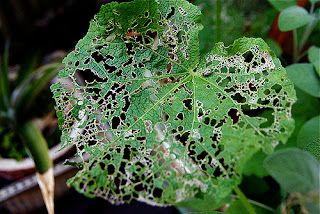The New Year is almost upon us, have you made any resolutions yet?
I have.I plan on writing more books this year than I did last year.
Of course, then I go and sneak one more in for this year, oh well, I am EXTREMELY excited about this one!!
It is a Children's Picture Book called, "Plants Are Our Friends".
As many of you know, I am huge on education. Especially horticulture, but all areas need to be revamped. I am mostly concerned in the horticultural area because of a number of things.
First, many children do not know where their food comes from, other than the grocery store.
Second, many garden clubs and other societies are starting to fade out because the youth of America is not interested in a little work, sweat, or dirt.
I wrote an article back in 2016 about the last problem, you can go and read that HERE.
This book looks to start introducing young children to what plants are, what they do for us, and how they relate to the entire planet.
Here is the description of it on the Amazon Website:
Plants are called our friends because friends share things. We give and share things with plants, such as carbon dioxide, the air that we exhale. Plants give us oxygen to inhale and food to eat which allows us and other things to survive. Children need to be exposed to the connection that all life on earth has with plants. This picture book asks your child if they are friends with plants. It tells them what plants do for them like how they share food, create places to play, and make pretty things to look at and smell. This book also tells them how plants are important for other animals by providing homes and food for them.
As you read "Plants Are Our Friends" to your children, or if they are reading it themselves, it offers ways to interact with them by asking questions that will cause them to think and showing ways that plants are beneficial. The intentions of this book are numerous.1) To get kids interested in the world around them and how it impacts them.2) It motivates them to seek out a different perspective on why there are plants and what they do.3) Hopefully, it will get them to lay the electronics down for a little while and see what nature has to offer.
Our future depends on plants, not just for beauty and fun, but for survival. Farmer's rely on plants to grow to make all kinds of things. Children need to be exposed to nature so that they will understand that apples, for instance, do not just come from the grocery store. This book will also help teach that friendship is not a one-way street. There should be a give and take, that is what makes a good friendship.
When I had the majority of this crazy idea written, I put out a request on Facebook, looking for some of my friends, especially the ones with children in the 3-7 age group to look at it and give me some feedback. I got some REALLY good information, included those changes, and created what it is today.
Here are just a few of the things that were said:
Sir,
I believe it is EXCELLENT for the age group you are planning! Good luck and I feel it will be well received.
Louie A.
Ok...I just read this to my three boys. Ages 5,6,& 10
I will start with...they loved it!
Julie H.
I love your book!!! It is so sweet and I think that a lot of kids would like it. I like how you related the plants to activities that kids like to do & related it to the animals (who are also friends!). I like that you ask the reader questions. And I enjoyed the beautiful, colorful photos.
Kathy M.
My Daughter just read the book to her daughter.
They both liked it and J. immediately ran to her Dad and showed him pages and asked him if he wanted to be friends with plants, etc., etc, 😊 They both really liked the pics.
By my granddaughter's reaction, you have a winner.
I liked the pics myself and the relationships you showed.
Mark M.
This book is so good, I love it, can't wait to see the finished product.
Deidre D.
This was just a sampling of the responses I got.
THANK YOU to everybody that gave me feedback!
I also want to send a special Thank You to my cover model, Sarah and her father for letting me use her picture.
I would be very honored if you were to pass this article, or the link to my book, on to anybody that you know that has children in the 3-7 age range.
Plants are vital to the survival of the human race, we owe it to future generations to introduce our children to them, so they can pass on the knowledge.
If you have any questions about gardening, this, or any of my writings, articles, etc drop me an e-mail to TheCitrusGuy@netzero.com
You can follow me on Facebook
Or go to my Website
Happy Growing!
Darren























































